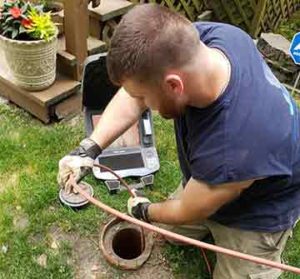You probably know you should do a home inspection when buying a house. You may also realize the value of doing additional testing for mold, radon, lead, or foundation damage when the home inspection report recommends them, says Windermere Management. But did you know that you should do a sewer line camera inspection before you pay for any property?
Home inspections check the condition of a home’s major structures and systems, plus the appliances inside it. It will look at the plumbing, electrical, and HVAC systems. Home inspections also examine the building’s foundations, roof, walls, flooring, and main mechanicals. But home inspections do not include an assessment of the sewer lines.
Why sewer lines are excluded from home inspections
Home inspectors conduct a general evaluation of a building’s physical structures. They are not meant to dig deep into the condition of every single aspect of the house. But, if, during the inspection, a home inspector encounters a problem that requires deeper investigations, they will recommend an add-on inspection to investigate the issue further.

There are two main reasons why sewer inspections are not included among the things home inspectors do:
- Sewer lines are buried deep inside the ground, completely out of the home inspector’s view. Home inspectors will not inspect those parts of the home that are inaccessible.
- Home inspectors do not have the tools needed for a sewer line inspection. There are experts who are specifically trained for that.
Regardless of these, neglecting to check the state of the sewer line before buying a house could turn out to be a massive mistake.
Why do you need a sewer line inspection when buying a house?
The main issue is the cost of fixing sewer line problems. If you buy a home without inspecting the sewer lines, you could be lucky and not find any problems with the system. But you could also discover that your new home’s sewer line is in need of urgent attention. Because of the amount of excavation involved, sewer line problems are very expensive, often in tens of thousands of dollars.
Also, in spite of the fact that they are designed to be durable and long-lasting, sewer lines can be damaged by a fair number of things. Most issues with sewer lines are the result of people flushing things down the drain. A few of the most common causes of damaged sewer lines include:
- Blockage by flushed objects
Grease and oil, starchy foods (rice and potato), so-called flushable items, baby wipes, female sanitary products, coffee grounds, and eggshells. These are just a few of the “harmless” things people put into drains that ultimately damage the sewer line.
- Soil movements
Upward or downward shifts in the soil around sewer lines can create dips along the line. As water slows down in the lower portions of the line, sediment accumulates and eventually leads to blockages.
- Tree roots
Tree roots can pierce the line in order to reach the nutrient-rich water flowing through it. Over time, these roots ball up inside the pipe, blocking the drain completely. Tree roots can also push pipes upward or downward when they grow around them.
- Aging
Older types of sewer lines, especially metal ones are prone to rust. If the home was built thirty to forty years ago, the chances that the sewer line has deteriorated are very high.
The point is this sewer lines blockages are more common than most home buyers realize. That’s because the issues that cause those blockages are commonplace. This is why makes complete financial sense to spend the few hundred dollars it costs to do a sewer line inspection than spend the thousands of dollars it costs to replace a damaged sewer line.
How to do a sewer camera inspection
- The sewer line inspector or technician will look for a clean-out on the property. This is a capped pipe that connects directly to the sewer and protrudes out of the ground. Because it offers direct access to the sewer line, it makes sewer maintenance easier. Clean-outs are often located in close proximity to the sidewalk or a bathroom.
- If they are unable to find a clean-out, the technician will find an alternative route into the sewer line. Typically, this will mean removing one of the toilets in the home.
- The most effective and least expensive way to conduct sewer line inspections is with a sewer camera inspection. To conduct the inspection, a small waterproof camera is mounted on a flexible cable and passed into the sewer line. The cable is fed through the line until the camera reaches the main sewer line or an obstruction in the sewer line.
A sewer camera inspection will show you the existing and potential issues with the sewer line. If you schedule the sewer camera inspection at the same time as the home inspection, you can add the result to the home inspection result. A sewer scope inspection helps you make an informed decision.
